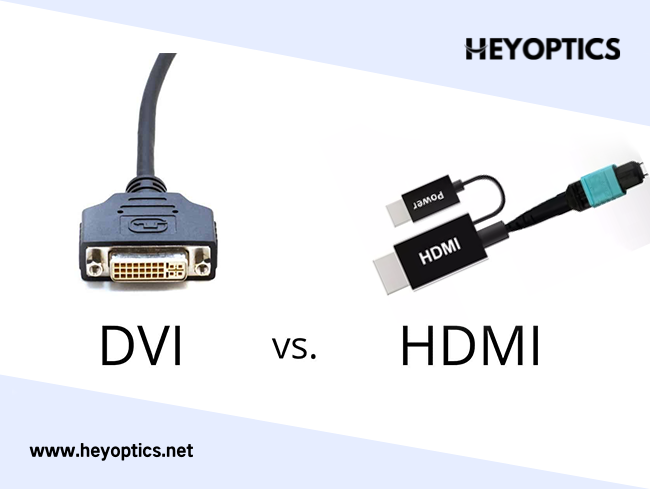Fiber Optic Splicing Guide
Fiber optic splicing is an important method of joining two fiber optic cables together. It is a preferred solution when an available fiber cable is not sufficiently long for the required run. Besides, fiber optic splicing is designed to restore fiber optic cables. In case they are accidentally broken. Nowadays, fiber optic splicing is widely deployed in telecommunications, LAN (Local Area Network) and networking projects. Typically, we can undertaken fiber optic splices two ways: fusion splices and mechanical splices.
What is Fiber Optic Cable Splicing?
Fiber Optic Cable is a form of modern network cable that has a far greater capacity than electrical communication connections. optical fibers are made comprised of exceedingly tiny strands of glass or plastic and these cables transfer information between two sites using completely optical (light-based) technology.
Fiber Optic Cable Splicing is the method of joining two fiber optic cables together. Termination is the other, more frequent way of linking fibers. Fiber splicing is the preferred way when cable lines are too long for a single length of fiber or when combining two different types of cable.
Fusion splicing and Mechanical splicing are two methods of fiber optic splicing. Both techniques have much lower insertion loss than fiber connections.
Fiber Optic Splicing: Fusion Splicing Method
Fusion splicing is a permanent connection of two or more optical fibers. The two fibers are welded together with an electronic arc. This is the most widely used method of fiber optic splicing. Because it provides the lowest loss, less reflectance, strongest and most reliable joint between two fibers. When you adopt this method, fusion splicing machines are often used.
The fiber cores are fused together with reduced attenuation in the fusion process (insertion loss of less than 0.1 dB). Arc or another type of heat during fusion splicing. This leads to a clear, reflection-free, and continuous connection between the fibers, which enables very little light loss (average loss of 0.1 dB). Fusion splicing is a complex process that requires great care. Your fibers may not be connected properly and if not done correctly, your signal may degrade.
Steps to perform Fusion splicing:
Step 1: Fiber striping: You must first remove or peel off the protective polymer coating around the fiber optic cable before you can begin fusing it. A mechanical stripping device, similar to stripping pliers, is usually used for this purpose. Remember to clean the stripping equipment before starting the fusing process.
Step 2: Fiber Cleaning: It’s time to clean the raw fiber after it’s removed from its shell. The glass can be kept clean by wiping it with 99.9% isopropyl alcohol (IPA) and lint-free wipes.
Step 3: Fiber Cleaving: To make an effective fusion splice, you need a decent cleaver. Instead of cutting the fiber, the chopper knife cuts and pulls or bends it to cause a neat break, with the end face remaining flat and perpendicular to the fiber axis.
Step 4: Fiber Fusion: After the fibers have been split, use a fusion splicer to join them together. The ends of the fiber must first be aligned within the splicer. Melt the fibers with an electric arc after they’re correctly aligned, permanently fusing the ends together.
Step 5: Fiber Protection: The splice will not break during typical handling if the fiber is protected from bending and tensile loads. Although a standard fusion splice has a tensile strength of 0.5 to 1.5 pounds and would not break with normal handling, it must be protected from extreme bending and tensile pressures. The splice is protected from the weather and breakage by using shrink tubing, silicone gel, and/or mechanical crimp protection.
Advantages of Fusion Splicing:
Fusion splicing is a compact process and has the lowest insertion loss and back reflection.
Fusion splicing is permanent and has the highest mechanical strength.
Fusion splicing can withstand a wide range of temperatures.
Dust and other pollutants are kept away from the optical path by fusion splicing.
Disadvantages of Fusion Splicing:
If too much heat is applied to melt the fiber optic cable for termination, the connection will become brittle and cannot be used for a long time.
Fusion splicing causes significant up-front costs of continuous power supply as well as some special instruments.
Fusion splicing cannot be used for temporary connections as it is a lengthy process
Fiber Optic Splicing: Mechanical Splicing Method
If you want to make splices quickly and easily, the mechanical splice is a better choice. A mechanical splice is a junction of two or more optical fibers. The fibers are aligned and held in place by a self-contained assembly. A typical example of this method is the use of connectors to link fibers. This method is most popular for fast, temporary restoration and splicing multimode fibers.
Mechanical splicing is a type of splicing that does not use a fusion splicer. A mechanical splice is an optical fiber connection that is adjusted and maintained in place by an assembly that employs an indexing fluid to keep the fibers aligned. Mechanical splicing permanently connects the two optical fibers with a short mechanical splice approx. 6 cm long and 1 cm in diameter. This will mechanically join two bare strands after they have been properly aligned. Mechanical splices are simple alignment devices that keep the two ends of the fiber completely aligned and allow light to travel from one fiber to the other.
The splice is securely attached with a snap cover, an adhesive cover, or both. The fibers are not permanently connected; they are only held together tightly enough to let light through. (0.5 dB insertion loss) The splice loss is typically around 0.3 dB. On the other hand, fiber mechanical splicing introduces more reflection than fusion splicing. Mechanical splices for fiber optics are small, simple to use, and appropriate for rapid repairs or long-term installations. They come in both permanent and re-enterable forms. Mechanical splices for single-mode and multimode fiber optic cables are available. Mechanical splicing is easier to perform but allows higher insertion loss. Therefore, mechanical splicing is best for a quick or temporary repair rather than a permanent splice.
Steps to Perform Mechanical Splicing:
Step 1: Fiber Preparation: Protective coatings, jackets, tubes, strength members, and other materials should all be removed, leaving only the naked fiber visible. The most important consideration is hygiene.
Step 2: Cleaving the fiber: The process is comparable to fusion splicing cleaving, however, the accuracy of the cleave is less crucial.
Step 3: Joining fibers mechanically: This approach does not utilize any heat. Simply place the fiber ends in the mechanical splice device and splice them together. Light coupling from one fiber end to the other will be aided by the index matching gel in the mechanical splice equipment. Rather than an index matching gel, epoxy will be used to hold the cores of earlier equipment together.
Step 4: Fiber protection: The final mechanical splice acts as its own splice protector.
Advantages of Mechanical Splicing:
Mechanical splices do not require electricity.
Other than a fiber stripper and a fiber splitter, many mechanical fiber splice designs require no additional equipment.
Mechanical splicing is useful in cases where fusion splicing is not conceivable or practical. This makes them perfect for short-term connections.
Disadvantages of Mechanical Splicing:
The insertion loss is much higher. The normal insertion loss of a mechanical splice is about 0.2 dB, which is much greater than the 0.02 dB loss of a standard fusion splice. Multimode fibers are usually spliced mechanically.
Mechanical splices struggle to meet the alignment tolerances of single-mode fibers.
Mechanical splices are only used under relatively safe conditions, such as in an office building.
Which Method is Better?
Both fusion splicing and mechanical splicing method have their advantages and disadvantages. We need to Choose fusion splice or mechanical splice depends on the applications.
The performance of a splicing method is often determined by the industry in which you are in. Because the fusion splices are virtually smooth, fusion splicing creates less loss and back reflection than mechanical splicing. Mechanical splices work with both single-mode and multimode fibers, while fusion splices are only used with single-mode fibers.
The fusion splicing provides a lower level of loss and a higher degree of permanence than mechanical splicing. However, this method needs to use expensive fusion splicing equipment. In view of this, we tend to use fusion splice for the long and high data rate lines. These rate lines are unlikely to be changed once installed.
Fusion splicing is used by many telecommunications and cable television providers for long-haul single-mode networks, although mechanical splicing is used for shorter local cable lengths. Fusion splicing is also preferred for this application because analog video signals require little reflection for optimal performance. Signal loss and reflection are negligible problems for most LAN applications, so the LAN industry can use either approach.
The mechanical splicing is often used in these situations. When splices need to be made very quickly and the expensive equipment for fusion splices are not available. Some mechanical fiber optic splice allows both connection and disconnection. So a mechanical splice can be used in not permanent situations.
Conclusion
Fiber optic splicing is an important method in the installation of fiber optic networks. We need to Choose fusion splice or mechanical splice depends on the applications. When you do fiber splicing, you need to follow the specific instructions strictly for perfect splices. Besides, keeping all splicing tools clean is also important.



